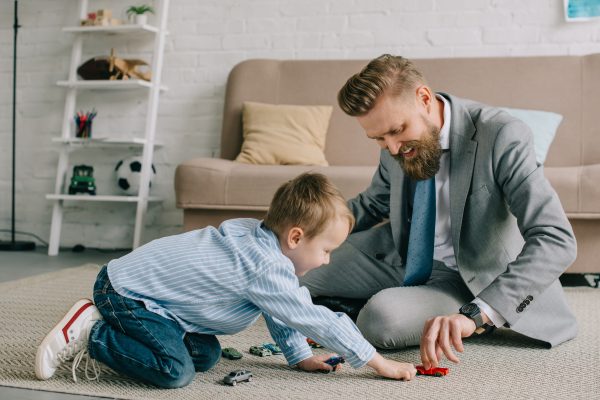Caring About Workplace Health and Safety
Make workspaces and worksites safe and healthy, and prove you care about employees’ safety as much as they do

Ensuring workers’ health and safety is one of the most fundamental responsibilities of a workplace. Sure, laws and regulations require employers to meet certain basic standards around health and safety. But we’re talking about building happiness, and health and safety sit at the very foundation of happiness. Employees who are (and feel) physically safe can develop happiness in their productivity, career growth, connections with other employees, and pursuit of their company’s purpose. Employees who experience unsafe conditions or feel physically unsafe will never consistently feel happy in these other areas.
There is one critical ingredient that is often overlooked in a health and safety program: Care. Leaders and employees who care will foster, promote, and maintain a safe and healthy workplace. Growing care for health and safety is something every workplace can do. Let’s look at some of the best strategies.
Make Safety Feedback Meaningful and Effective
Every workplace has processes for handling information from employees about health and safety conditions they see. Good processes show employees that leadership and human resources really care about employees. Good processes also enable employees to express their care for others by being proactive about health and safety. However, poor processes will leave employees feeling like they are just doing a routine to stay out of trouble. Good processes:
- Ensure processes go both ways. Establish hazard reporting and issue reporting for employees to use whenever they see something concerning. Also require managers to have routines to check for health or safety problems.
- Give multiple methods of hazard reporting. While requiring a form ensures you get all information you need at one time, the work of completing it can make people feel like caring about safety is a chore. Set up a dedicated email, messaging account, or a webpage for safety issues and let employees know that they can simply write to it saying what they saw, when they saw it, and where they saw it. The person who monitors these safety-focused accounts can get the information to the right people, and can determine if the reporter needs to complete a form.
- Require follow up. Make sure that a responsible person reviews and responds to all safety feedback, hazard reports, and comments quickly (best within one workday). After the initial response, make sure that that any hazard or concern is actually resolved. Communicate with all employees who work in the affected area and tell them what the workplace did to fix it.
Go the Extra Mile
A common mistake when dealing with safety and health issues is to do only what is required by law, regulation, or policies. Where possible, find a way to do better than required.
- Provide full solutions. For example, a policy might say, “There should be one wet floor sign available for use on each floor of the building.” But if an employee reports that a wet floor sign could not be found when needed because one was already in use somewhere else, it is a stronger and more supportive solution to get multiple wet floor signs for each floor.
- Get quality equipment and resources. For example, a regulation might specify that hardhats be of a certain safety rating. Buying the cheapest hardhats with that safety rating is likely to irritate employees who would like to also have their comfort and convenience considered. Make sure that requirements do not overshadow other considerations when purchasing safety equipment.
- Ask what would work best. Don’t skimp on the time and effort taken to get the right solution. When in doubt as to the best solution, communicate with the teams who work in the area. Tell them what you are planning to do and see what suggestions they have for making the solution effective and compatible with their work.
Communicate in Terms of Care
Communications about health and safety are often handled like an afterthought. Doing the right thing with safety should be up-front, shared with everyone, and worth celebrating! When communicating about safety:
- Say why safety actions are done. Tell employees how the reason for taking a safety action connects to the workplace caring about them. For example, “we took this safety action to prevent any of us from getting hurt/sick. We care about you. Keeping each other safe and healthy is the most important thing in our workplace!”
- Say why people should pay attention to safety matters. Tell employees that safe behavior is something we do for ourselves, our coworkers, and our customers. Stress that safety is something we all do together to succeed.
- Celebrate success. When time goes by without an accident, communicate that to employees and take a moment for a group cheer! But also communicate when new safety equipment, supplies, or processes roll out and say that the workplace is excited to have another tool keeping everyone safe and healthy.
At Amazing Workplace, we find ways to bring care to all aspects of our work lives. Our world-class survey platform measures Employee Happiness across all areas. Want to know more? Send us an email at info@amazingworkplace.com.


